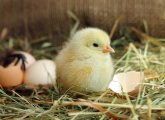It’s free, widely available, and a fantastic learning resource, says Hayley Room – so why not make the most of the earth beneath your feet?
One of the many benefits of learning outdoors is the ready access to free resources it offers. At Dandelion we are literally surrounded with our tools for learning.
We look above and see the elements in action. We glance to the side and observe life cycles, including death and decay, in all their gore and glory. But, by far, one of our greatest and most wondrous resources is the earth beneath our boots.
Whenever I am asked why learning outdoors is better than learning in a classroom, I simply point to the muddy ground and map out a square metre of earth.
In this single, regular rectangle, I say, we can meet every area of learning. All we need is the creativity to take advantage of this free resource, and the willingness to get dirty! This boggy, brown square, I point out, is teeming with learning opportunities.
So, what can I do in my muddy metre? Well, I can simply enjoy the sensory experience of mixing mud and water. I can dig, contemplate, and develop gross and fine motor skills. Or, I may go deeper and decide to:
● record my finds with marks, tallies, or numbers in the mud (creating a muddy paste to do so, thus investigating changing states and offering opportunities to expand vocabulary)
● sort, organise and categorise my finds (offering opportunities to justify, explain, and identify difference and similarities in the environment)
● create patterns/pictures/shapes with my finds (creativity and imagination are ignited here as time is taken to explore and discuss the creatures/objects. I may copy one of Richard Shilling’s pieces of natural eco-art)
● fill a variety of containers with my mud, exploring shape, space and measure (here I am also exploring positional language, estimating, and counting my scoops)
If I’m lucky and find lots of worms, I may consider measuring them with non-standard units, or I might simply collect and count them as I take them to my wormery.
I’ll also explore decay, as I see my food trimmings in the wormery, and I’ll discuss life cycles, predators and prey as I examine my worms with my bug-noculars.
I might also make mud castles, with a drawbridge and a moat, exploring maps, positional language, and construction techniques. In doing so, of course, I’ll also test my theories and learn through my ‘harmless’ mistakes.
This is not an exhaustive list. It’s a mere glimpse into the depth and breadth of learning that can be achieved in a small, seemingly insignificant, patch of earth outside.
Dandelion may have a few acres in which to do this, but as you can see, a square metre and some imagination is all that is needed to access the entire framework and engage children in learning in a meaningful, purposeful way.
1 Be mud ready: Warm water and hand drying cloths are a must - soil can be very cold, and although the microbes in soil boost our immunity, and mud play has many psychological benefits, we can catch some nasties under our fingernails too!
2 Get organised: Create a grab crate with all the tools you might need to support learning. Think about a variety of receptacles, a mixture of digging implements, magnifiers etc.
3 Dig in!: Make sure the adult engaged in the play and learning likes being outdoors and getting dirty!
Find out more about Dandelion Education at dandelioneducationltd.com.

5 ways to make sure a hatching project is ethically run
Editors picks
Rhythm games – Encouraging literacy through music
Editors picks
